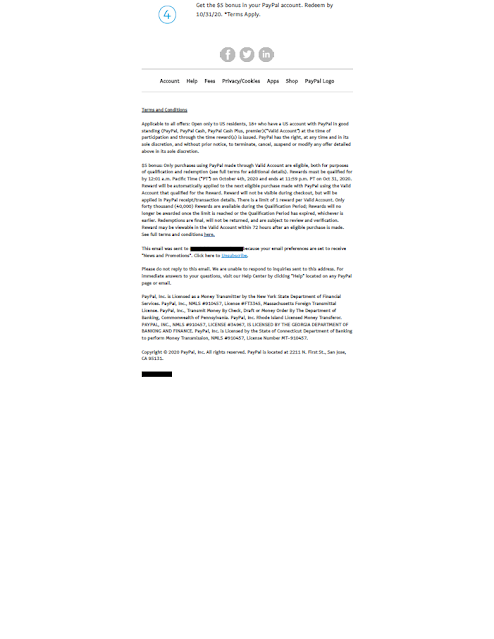This recent email from PayPal merits a couple Fails for Creative.

There is a clear Call to Action and an incentive for the customer to take action now. The email was sent on September 25 with an offer expiration date of October 4, so immediacy is encouraged.
But, what is Honey? Why would I add it to my browser? How do honey members save money, and compared to what? None of these questions are addressed in the email.
The other Fail is less important, but worth mentioning. According to the disclosure and the detailed Terms & Conditions found on Honey's site, only 40,000 customers are eligible for the award. Once that limit is reached -- even if before offer the expiration date -- the reward will no longer be available. This type of restriction is fairly common in direct-to-consumer marketing. I've included number-of-customer limitations in several campaigns to ensure the product is not oversold or to cap potential incentive liability. When I did, I would use this clause to my advantage by communicating it in the body of the email. PayPal could do this by including above the Call to Action a message along the lines of...
Be one of the 40,000 people to get your $5 bonus by October 4th. Bonus must be used by October 31st.*
or ...
This exclusive bonus offer is limited to the first 40,000 people to take action by October 4th. Bonus must be used by October 31st.*
- It is not enough to have a call to action and encourage immediacy in your direct-to-consumer emails. They should always include a value proposition.
- If your offer is limited to a specific number of customers, do not bury that restriction -- use it to your sales advantage.

No comments:
Post a Comment